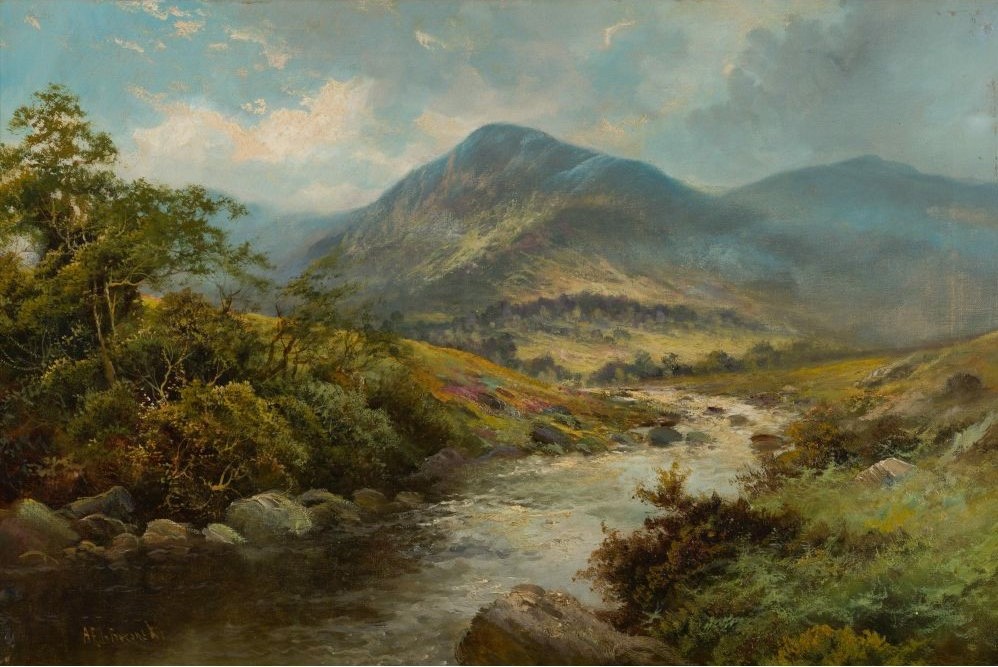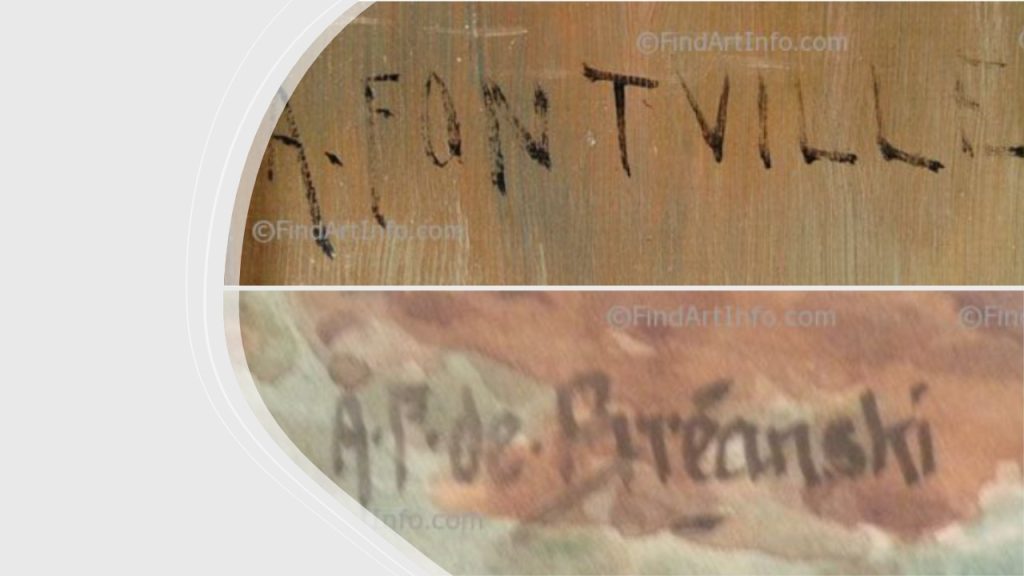Alfred Fontville de Breanski Jr. (1877–1957) emerged from a lineage steeped in artistic brilliance, with his father, Alfred de Breanski Sr., a highly regarded Victorian landscape painter, and his mother, Annie Roberts, a skilled Welsh painter. Born into this family of artists, de Breanski Jr. embarked on an early artistic journey, honing his skills alongside his father, Uncle Gustave de Breanski, and his younger brother, Arthur. The scenic landscapes of Wales, frequented by the family, served as a natural canvas for their artistic endeavors.

Table of Contents
Artistic Evolution: From Naturalism to Symbolism
Traversing the realms of artistry, de Breanski Jr. ventured to France in the 1890s, a pivotal journey that left an indelible mark on his work. Influenced by luminaries like James McNeil Whistler and the vibrant arts community in belle époque Paris, his landscapes evolved from naturalistic representations to Symbolist compositions. The Impressionist emphasis on unadulterated color and stenographic brushwork became integral to his craft, as seen in masterpieces like “Evening at Loch Vennaeker” and “Fishing Fleet in the Harbour.”
Impressionistic Odes to English Gardens
Returning to London, de Breanski Jr. showcased his prowess in annual exhibitions, garnering acclaim for his Impressionistic garden paintings. Inspired, perhaps, by Monet‘s iconic series, he presented captivating works like “A Cottage Garden”, “Summer”, “Willows”, and “Autumn Gold”. The success of these garden-themed creations led to a unique collaboration with the Underground Electric Railways Company, where his art adorned London’s trams and buses, championing the accessibility of high-quality art in everyday life.
Navigating Artistic Trends and Auction Triumphs
As the 1920s unfolded, de Breanski Jr. persisted in his dedication to landscapes and gardens, even as the art world underwent transformative shifts. Despite later assessments of his work as somewhat old-fashioned, contemporary scholars are revisiting his contributions beyond the modernist canon. The auction houses of Christie’s, Bonhams, and Lempertz have consistently showcased his pieces, attesting to the enduring appeal and value of de Breanski’s artistic legacy.
Capturing Timeless Landscapes: Auction Prices and Beyond
In the world of art auctions, Alfred de Breanski‘s masterpieces have become coveted treasures. The auction prices achieved at renowned houses underscore the timeless allure of his creations. Whether it’s the majestic landscapes of Welsh mountains or the enchanting English gardens, each stroke of de Breanski’s brush narrates a tale of artistic brilliance. The spirited bidding wars at auctions, hosted by esteemed institutions, illuminate the perpetual resonance of his work in the hearts of collectors and art enthusiasts alike.
FAQs
What are the key characteristics of Alfred de Breanski’s art?
Alfred de Breanski’s art is characterized by a seamless blend of naturalism and Symbolism. His early works, influenced by his father’s landscape style, transitioned into Symbolist compositions during his sojourn in France. The Impressionistic emphasis on color and brushwork became integral to his later masterpieces.
How did de Breanski contribute to commercial art?
De Breanski positioned himself in the modern art movement by collaborating with the Underground Electric Railways Company to design posters for London’s transit system. These art nouveau designs adorned trams and buses, emphasizing the accessibility of high-quality art to the general public.
Where can one find information about Alfred de Breanski’s paintings and signatures?
For comprehensive information about Alfred de Breanski’s paintings and signatures, FindArtInfo offers valuable resources for art enthusiasts and collectors. Explore the list of prices and signatures associated with this esteemed artist.
What is the significance of de Breanski’s garden paintings?
De Breanski’s garden paintings, such as “A Cottage Garden” and “Summer,” played a pivotal role in his artistic journey. Inspired by Impressionistic techniques and the allure of English gardens, these works garnered acclaim and even adorned London’s trams and buses through a collaboration with the Underground Electric Railways Company.
How did Alfred de Breanski navigate changing artistic trends?
While the 1920s witnessed shifts in artistic preferences, de Breanski persisted in his dedication to landscapes and gardens. Contemporary reassessments recognize his contributions beyond the modernist canon, highlighting the enduring relevance of his work.

